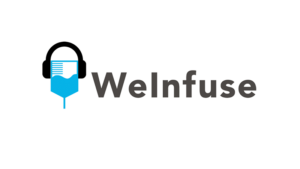Rapid changes in commercial medication reimbursements, the uncertainty of Medicare payment policies, and an influx of new biologic and specialty medications have many providers re-thinking their medication inventory strategies in an effort to balance or avoid risk while continuing to provide their patients access to infusible and injectable medications in their office-based Infusion Centers. This series of posts will look at the differences in these inventory strategies and address the merits of each in an effort to help providers better understand and think about which combination of strategies best fits the needs of their practice and patients.
Infusion Center providers have choices in inventory strategies when providing infusion and injectable medications for their patients. Many providers traditionally bill insurance through a fee-for-service system in which they purchase medications as inventory that they then administer to patients in their office settings. This is known as the Buy and Bill process by which the provider must “Buy” the medications, then “Bill” them to the private insurance or Medicare payer. The “Buy&Bill” strategy front loads the financial risk to the provider who must stock, manage, and bill these medications properly or risk not being reimbursed.
For most patients with commercial insurance, there is an alternative to the Buy&Bill strategy. The Infusion Center can choose to use the services of a Specialty Pharmacy (“SpecRx” for short) whereby the medication is shipped, patient-specific (in the patient’s name), to the Infusion Center. With this method, the financial burden of the medication is shifted to the providing pharmacy which will seek reimbursement directly from the payer. In this situation, the Infusion Center must still stock, manage, and administer the medication, but does not bill the medication and therefore is not reimbursed by the payer for the cost of the medication. This method is commonly referred to as having the “Med provided,” or “White Bagging.”
While SpecRx sounds like an easy solution, the administrative burden on an Infusion Center actually increases under this method in that the Infusion Center often stand in as a coordinator between the pharmacy and the patient. If the patient fails to pay the required co-pay or coinsurance to the pharmacy, the pharmacy will not ship the medication to the Infusion Center; meanwhile, the Infusion Center clinical staff is working to ensure that the patient remains compliant and receives their medication on the date that adheres to the provider’s orders. Inevitably, the Infusion Center gets involved to determine the status of the pharmacy shipping the medication. This increased overhead burden of managing specialty pharmacy patients is not reimbursed by insurance and the Infusion Center is only able to bill for the infusion administration under this arrangement.
Inventory Strategy Trade-offs
While the Specialty Pharmacy strategy can remove a substantial financial risk of managing a very expensive medication inventory from the Infusion Center, it also removes any profit opportunity that the provider might have had with a Buy&Bill strategy while simultaneously increasing the overhead burden.
Like so many situations in our lives, moderation is the answer if you want to maximize your Infusion Center profit while managing your financial risk. If patient access and profitability are your primary concerns, then neither strategy should be embraced in totality except in special situations. We discuss those unique situations in our future post in this series.
Not all medications are created (or reimbursed) equally. When I use “Profit” here below, I am referring to the Total Profit (Total Revenue including procedure and medication reimbursement minus COGS which includes the cost of the medication and direct infusion labor cost)
For providers who embrace the challenge, there are 3 Infusion Buy and Bill rules to manage your risk.
- Buy&Bill is for PROFITABLE drugs/treatments.
- Your Discounted Cost (cost after discounts, rebates, etc) and direct infusion labor cost (Infusion Nurse) must be less than your payer reimbursement for this to work.
- You must consider your administrative time/staff cost as well in this calculation. Your staff time cost $$ and some drugs take more time to authorize, administer, etc.
- Know you REPLACEMENT RISK threshold.
- If the medication cost is $5,000 and your treatment profit is $500, then an unpaid claim will cause you to have to perform 10 additional treatments to replace the lost medication cost.
- You need to have a comfort level with your Replacement Risk Number and use that value as a tool to evaluate new medications for the Buy&Bill Strategy
- This is not meant to always be a hard and fast rule, there is always some subjective reasoning to justify higher risk replacement values for certain situations.
- Buy&Bill is for FAMILIAR drugs/treatments.
- I have a personal finance rule that I only invest in things that I understand, I think that is a good rule of thumb for Buy&Bill medications as well.
- If the drug is brand new or your office has Zero experience with it, might be best to let the first few treatments roll through under SpecRx until all the supply chain and clinical kinks are worked out.
- If the medication is not common in your center/office, your billing team won’t be as up to date on it as other medications and that can open the door to future claim issues.
Ultimately, if you are the decision maker, you need to decide on an inventory strategy for your office. The point of this post is that the decision should be thought all the way through with some idea to the future and how adding even 1 additional medication to your Buy&Bill office strategy might affect your ability to provide other Buy&Bill medications to your patients. In this declining reimbursement environment, Buy&Bill currently offers the greatest opportunity for profit in your Infusion Center assuming you pay close attention to your numbers, inventory, fee schedules and manage your risk thoughtfully.
If you are looking for a great tool that can help you better manage your in-office infusion suite or stand-alone infusion center today, come check us out at https://weinfuse.com
Stay tuned, our next post will address when Specialty Pharmacy can be your friend and will look at different situations where SpecRx can help improve your patient flow and your bottom line.




